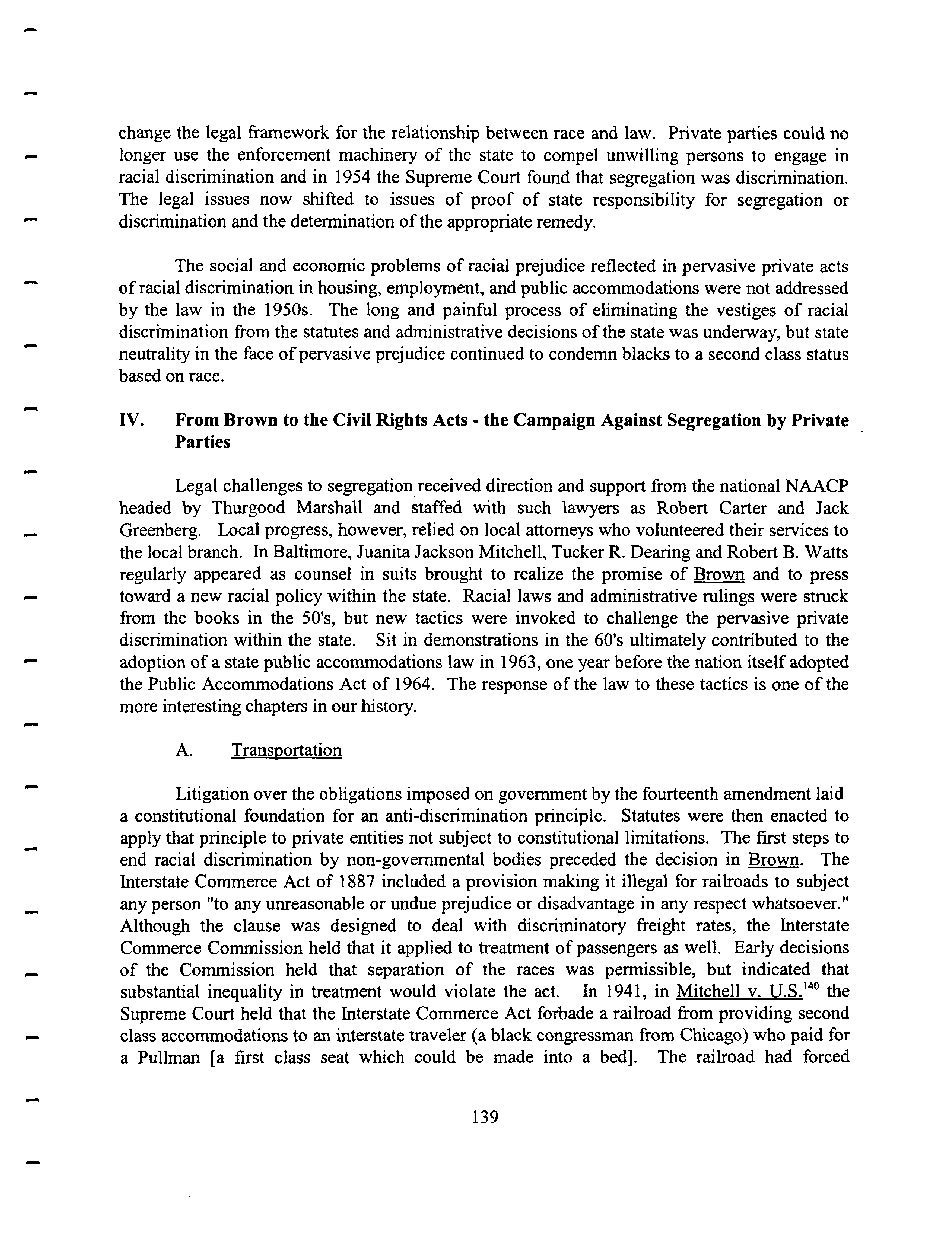|
change the legal framework for the relationship between race and law. Private parties could no
longer use the enforcement machinery of the state to compel unwilling persons to engage in
racial discrimination and in 1954 the Supreme Court found that segregation was discrimination.
The legal issues now shifted to issues of proof of state responsibility for segregation or
discrimination and the determination of the appropriate remedy.
The social and economic problems of racial prejudice reflected in pervasive private acts
of racial discrimination in housing, employment, and public accommodations were not addressed
by the law in the 1950s. The long and painful process of eliminating the vestiges of racial
discrimination from the statutes and administrative decisions of the state was underway, but state
neutrality in the face of pervasive prejudice continued to condemn blacks to a second class status
based on race.
IV. From Brown to the Civil Rights Acts - the Campaign Against Segregation by Private
Parties
Legal challenges to segregation received direction and support from the national NAACP
headed by Thurgood Marshall and staffed with such lawyers as Robert Carter and Jack
Greenberg. Local progress, however, relied on local attorneys who volunteered their services to
the local branch. In Baltimore, Juanita Jackson Mitchell, Tucker R. Dealing and Robert B. Watts
regularly appeared as counsel in suits brought to realize the promise of Brown and to press
toward a new racial policy within the state. Racial laws and administrative rulings were struck
from the books in the 50's, but new tactics were invoked to challenge the pervasive private
discrimination within the state. Sit in demonstrations in the 60's ultimately contributed to the
adoption of a state public accommodations law in 1963, one year before the nation itself adopted
the Public Accommodations Act of 1964. The response of the law to these tactics is one of the
more interesting chapters in our history.
A. Transportation
Litigation over the obligations imposed on government by the fourteenth amendment laid
a constitutional foundation for an anti-discrimination principle. Statutes were then enacted to
apply that principle to private entities not subject to constitutional limitations. The first steps to
end racial discrimination by non-governmental bodies preceded the decision in Brown. The
Interstate Commerce Act of 1887 included a provision making it illegal for railroads to subject
any person "to any unreasonable or undue prejudice or disadvantage in any respect whatsoever."
Although the clause was designed to deal with discriminatory freight rates, the Interstate
Commerce Commission held that it applied to treatment of passengers as well. Early decisions
of the Commission held that separation of the races was permissible, but indicated that
substantial inequality in treatment would violate the act. In 1941, in Mitchell v. U.S.140 the
Supreme Court held that the Interstate Commerce Act forbade a railroad from providing second
class accommodations to an interstate traveler (a black congressman from Chicago) who paid for
a Pullman [a first class seat which could be made into a bed]. The railroad had forced
139
�
|

